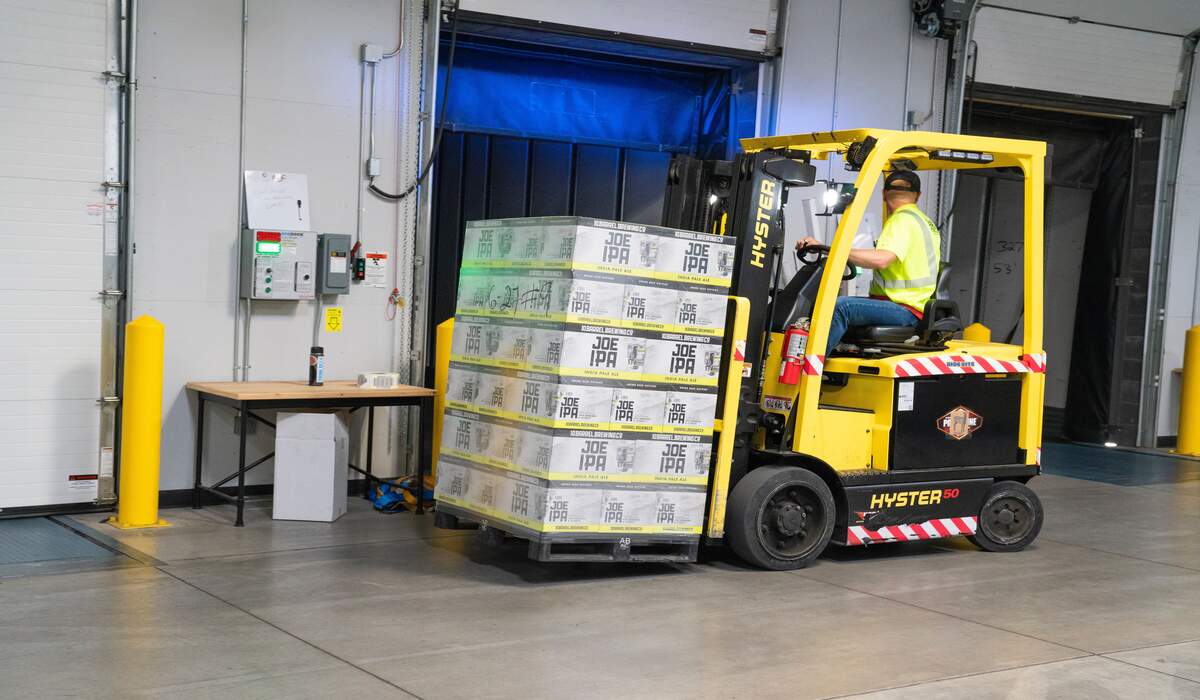Table of Contents
Forklifts are essential in many industries, especially warehouses, factories, and construction sites where efficient storage solutions like pallet warehouse racking are common. They are used for loading and unloading goods, moving heavy items from one location to another, and even in building maintenance.
Choosing the right forklift for your needs is crucial to ensure your operations’ productivity, safety, and efficiency. Here are some important factors to consider when purchasing forklifts.
Capacity
Capacity is a key factor to consider when planning to buy a forklift. It refers to the maximum weight a forklift can lift and carry safely. Choosing a forklift with the right capacity is crucial to ensure it can handle the weight of the heaviest load you will be moving.
The load centre distance is from the load’s centre to the front of the forks when properly positioned. It is important to note that the capacity of a forklift depends not only on the forklift itself but also on the load centre distance and the weight distribution of the load.
Environment
Another critical factor to consider when purchasing a forklift is the environment in which it will be operated. The environment can significantly impact the performance and safety of the forklift, as well as its maintenance requirements and lifespan.
If the forklift is used indoors, you should consider factors such as the ceiling height, the width of the aisles, the type of flooring, and the presence of obstacles. For example, extreme heat or cold can affect the battery life of electric forklifts, while wet or humid conditions can cause corrosion and rust.
Type of Load
The type of load the forklift will handle is another important factor to consider when purchasing a forklift. Different types of loads require different forklift attachments, capacities, and lifting mechanisms.
- Palletised Loads: Standard forklift forks are suitable for most palletised loads, but if the pallets are larger or heavier, longer, or wider forks may be needed.
- Non-Palletised Loads: Forklifts that handle non-palletised loads require specialised attachments to lift them safely. Examples of attachments include drum clamps, carton clamps, or rotators.
- Irregular Loads: Irregular loads refer to loads that are not of a standard shape or size. Ensuring the forklift has the appropriate attachments or mechanisms for the irregular loads you will handle is essential.
- Bulk Loads: Forklifts that handle bulk loads require specialised attachments such as buckets, hoppers, or clamp mechanisms.
Fuel Type
The type of fuel used to power the forklift is an essential factor to consider when purchasing. The four most common fuel types for forklifts are electric, LPG, petrol, and diesel.
Electric forklifts have zero operating emissions, making them an ideal choice for indoor use, and they are also quieter than other types of forklifts.
LPG (liquid propane gas) forklifts are more powerful than electric forklifts and have a longer range, making them suitable for outdoor use. LPG forklifts also have a longer lifespan and require less maintenance than diesel or petrol forklifts.
Diesel forklifts are ideal for heavy-duty applications. These forklifts have higher lifting capacities than LPG or electric forklifts and are ideal for outdoor use, where their powerful engines and large tires can handle rough terrain. Petrol forklifts are generally suitable for light to medium-duty applications.
Height and Reach
When choosing a forklift, it’s essential to consider both the height and reach capabilities of the machine. The height capability refers to how high the forklift can lift the load, while the reach capability refers to how far the forklift can extend its forks to reach the load. Choosing a forklift that can safely lift the load to the desired height without tipping over or causing any damage is essential.
If you need to pick up loads from deep inside pallet racks or other tight spaces, you will need a forklift with a longer reach. It’s essential to choose a forklift with a reach capability that matches the specific needs of your application.
Manoeuvrability
Manoeuvrability is a crucial factor to consider when choosing a forklift. It refers to the forklift’s ability to move quickly in tight spaces, turn in narrow aisles, and operate efficiently in confined areas.
When considering manoeuvrability, there are several factors to keep in mind. One of the most important is the forklift’s turning radius. A forklift with a smaller turning radius can manoeuvre in tighter spaces. Which can be especially important in warehouses or other areas where space is at a premium.
Other factors impacting manoeuvrability include the forklift’s tire type and suspension system. Cushion tires are generally better for indoor use and provide a smoother ride. While pneumatic tires are better for outdoor use and can handle rougher terrain.
Planning to Buy a Forklift?
Looking to buy a forklift? Look no further than Toyota Material Handling Australia. Our high-quality forklifts are designed for reliability, efficiency, and safety. Moreover, we have a wide range of models to choose from to suit your specific needs.
Whether you need a forklift for a warehouse, manufacturing facility, or any other application. We have the expertise and experience to help you find the right solution.
So why wait? Check out Toyota Material Handling Australia today and take the first step towards finding the perfect forklift for your business!
Note: this information is presented as a guide only and is not intended as tailored advice. For more information or a no obligation site assessment of your forklift requirements please contact Toyota Material Handling Australia on 1800 425 438 or visit www.toyotamaterialhandling.com.au


